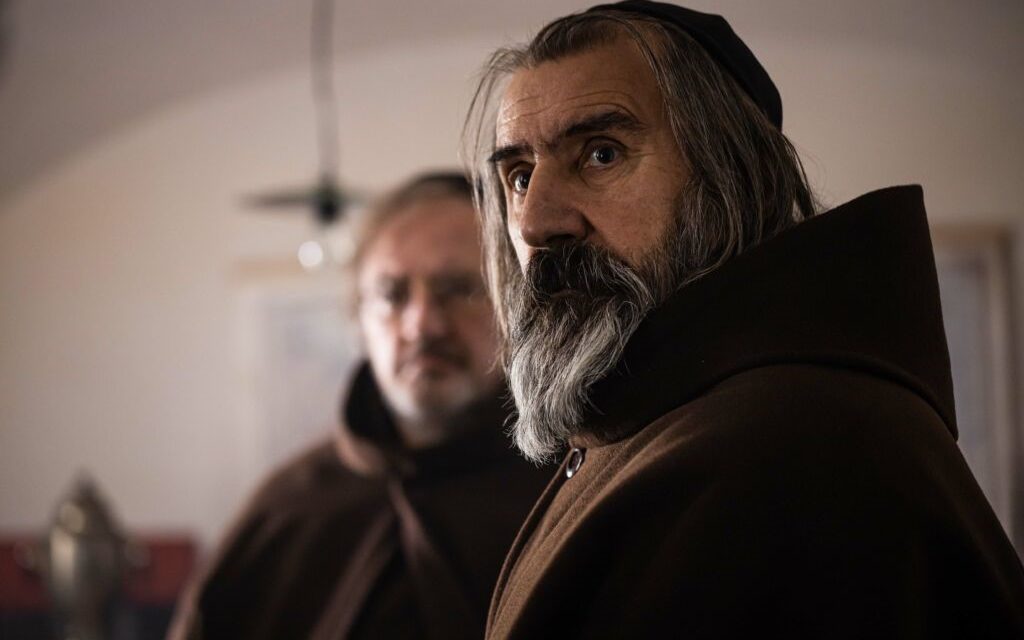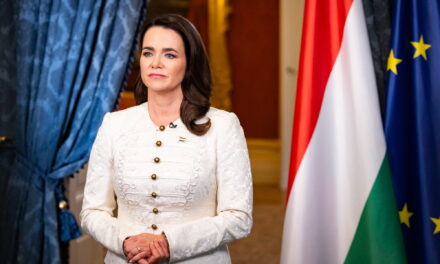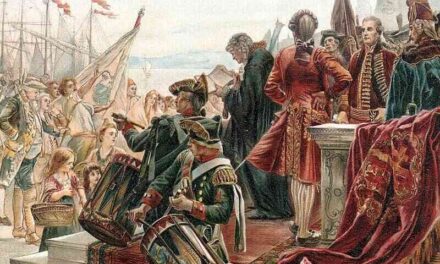The pre-premier presentation of Magyar Passion was held in Debrecen with the participation of Károly Eperjes, the director and main actor.
The hall was filled to the brim with mainly Catholic bishops, priests, monks, nuns and the faithful. It was difficult to get a ticket for it, because it was preceded by its reputation, but the presence of Eperjes and the personal conversation with him after the film exerted a great attraction. There has already been a presentation in Budapest that was viewed by Catholic dignitaries and journalists. A devastating criticism has already been published about him, and the journalists said, "we don't deal with propaganda", said the actor and director. The question arises, how can a film about Jesus and the crucifixion of his earthly priests be propaganda? The film is about much more than the deportations, than the dissolution of the Catholic religious orders, it has a Christian message for all people, so it is no coincidence that Eperjes, who is known to have a burning faith, was told by several people "this is your film", do it yourself "so it was left to me" said the actor-director.
Originally, it was Péter Várnai's titular provost's play, for which Eperjes asked several actors and directors to stage it, but everyone thought the same thing that he should do it. They weren't wrong. A "satisfaction" movie was finally made, as one commenting viewer put it. So far, no film has been made about the persecution of Christians, and the teaching of history is also lacking in this area. Until now, Péter Bacsó's films have been made about this communist period, his excellent film "Te rongyos élt" or the iconic "The Witness", about the resettlement, but these are satires, we laugh and smile at them, even though we should be crying. That's why this film is a substitute, in addition to the original interrogation room of the House of Terror, where the scenes of the film take place, the scene of the torture of the head of the Franciscan monastery, Leopold. The film also mentions the ordeal of Cardinal Mindszenty, who, under the influence of drugs, was made to sign a testimony about trumped-up charges. But the cardinal wrote in Latin that he was doing it under duress, which of course his torturers did not understand.
The film therefore takes place in the socialist reign of terror of the 1950s, about the dissolution and displacement of monastic orders, the banishment and torture of monks. The film is more of a documentary, it reports on the terrible persecution of Christians, but it touches on the torture of the nuns, often the dishonors, Trianon's pain is shown, but also the black cutting, night abductions, with an orphaned child. The pribéks are interested in gold, the church treasure, which is nothing more than holy objects of grace. However, the Holy of Holies of the Altar cannot fall into unauthorized hands, the priest also holds it with a stole, which we saw in the film. Because God's holiness is in it, just like the Jews in the Ark of the Covenant. (Emmerick AK)
The story revolves around how they are able to force Father Leopold, played by Eperjes, to testify in the case of favors. However, he does not break, and this turns the film, which otherwise has a driving force, the tension is maintained throughout and has an arc. The conclusion is surprising and here is the main point: love is forgiveness and mercy, salvation.
In the meantime, we see such precious images as the distracted Ecce homo, and at the end, the huge painting of the Salvationists, and here is the resolution, which is where the film culminates. In the beginning, it starts with a lyrical beautiful landscape and an idyllic picture, when there is still peace, then when the persecution begins, with slag, (today we would call it a water cannon) an attempt to disperse the faithful. The goal was to break up the mass given in honor of the 30-year Trianon celebration with water, to soak the picture decorated with flowers, to chase away the priests and thus disperse the people. However, they braved the water, everyone stayed where they were. According to the records, this was done in some places with feces and animal manure, because this really dispersed the crowd listening to the mass, the actor reported. Károly Eperjes did not want such drastic images, nor did he show the tortures in their terrible reality, as they took place, and we could not really hear the harsh speech of the pribéks and AVOs. Fortunately. A Christian person does not watch atrocities, horror, or the like and refrains from speaking badly. This solution speaks of the true religiousness of Károly Eperjes. He said that he was curious if this could be a gentler solution after Mell Gibson's bloody Passion and what kind of effect it would have. We note that the Mell Gibson film was about the bloody crucifixion of Jesus, which was made based on the visions of the stigmatized Catholic nun Anna Katalin Emmerick, which is identical to reality. This also has a right to exist.

In Eperjes's film, Father Leopold also takes on the suffering of Jesus, endures the tortures and finally has his hands nailed to a board like Jesus. His death was caused by an overdose of the same drug that was also given to Mindszenty. This final lead to death is no longer done by First Lieutenant Keller. After he tries in vain to break Father Leopold with selective tortures, with the cell lit day and night so that he cannot sleep, he does not break him. This was the method at Andrássy út 60, at the AVO headquarters, which is modeled after the House of Terror.
In fact, Father Leopold tells him I love you. He hits even harder and still says I love you. This breaks the AVO officer, who turns out to be an old student of Father Leopold. He is a man who seeks truth to the extreme, who is disappointed in the monastic order because someone behaved unworthily, "they preach water and drink wine", he says about them and turns against them. He believes in socialist ideals and denounces his own people for stealing petrol. Finally, seeing this attachment to the faith, seeing the love, he cries and asks forgiveness from the father. In the end, he also saves the holy subjects, the nun's housekeeper and the little girl with her. Then he is shot and dies, but before his death, the spirit of the already dead Father Leopold sacrifices him. Corpus Christi and Amen are said last. Thus, in the end, he too is saved, as suggested by the final image, The Saved. And this is the final message of the film, that if the sinner apologizes, he will receive mercy. It is not by chance that the title of the film will be "Mercy" in the international film world.
Eperjes also mentions in the conversation the Piarist monk Lajos Kerényi, who confesses and absolves the communist blood judge on his deathbed. Living history with us.
Thank you for the documentary exploration and the final message of Mercy!
Catherine the Spider












